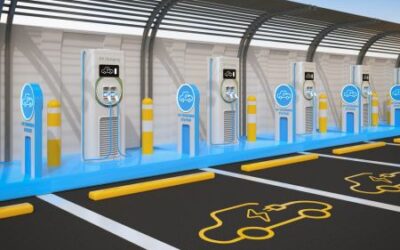Technology is changing every industry, and the architecture, engineering and construction sectors have been impacted significantly over the past decade and a half. The use of technology such as digital twins, building information modeling, and generative design would have been completely foreign years ago. Yet, project requirements today commonly call for many of these types of construction technologies in planning and solicitation documents. These leading-edge technologies are currently expensive, but they reduce risks, enhance efficiency and guarantee better project outcomes.
A $200 million project in Pittsburgh, Pennsylvania is being designed to replace traditional buses with autonomous vehicles. The driverless vehicles will be equipped with AI-driven navigation systems, sensors and real-time data analytics, which will allow for more efficient operation and improved service reliability.

Photo courtesy of tungnguyen0905 on Pixabay.
The transition to autonomous buses is becoming common throughout the U.S. as public transit authorities seek to reduce the reliance on human drivers, minimize operational costs and improve efficiency. Many public entities are focused on integrating autonomous vehicles into the existing transit infrastructure. The objective of the project in Pittsburgh is to prove that buses can operate autonomously and navigate urban streets safely without human intervention. The new buses are expected to enhance safety, improve scheduling consistency, maintain service frequency and reduce labor and operational costs.
A $50 million AI-enhanced 911 system in Los Angeles County is being designed to improve the efficiency and accuracy of emergency response operations through automation. The system will use various types of new technology to enhance triage by analyzing incoming calls, prioritizing them and then routing them faster to appropriate responders. The new AI system will have capabilities that include voice pattern recognition, geographic data and the ability to capture historical call information. It will enable dispatchers to address critical calls first, reduce response time, and improve resource allocation.
The AI-enhanced system will use predictive analytics to forecast emergency demand and optimize resource deployment across the county. It will improve planning and real-time decision-making, helping to manage rising call volumes and enhance responsiveness. Construction is expected to begin in 2024.
The Hudson Tunnel Project is a $16 billion infrastructure initiative currently being designed to enhance passenger rail reliability along the Northeast Corridor connecting New York and New Jersey. Advanced digital technologies will be critical components of the project, and they come at a significant cost. That includes $480 million for building information modeling (BIM) to optimize design and collaboration and $1.12 billion for digital twin technology to enable real-time monitoring and lifecycle management. There are also cost allocations of $320 million for AI-powered predictive analytics, $160 million for drone technology for surveying and inspections, $480 million for construction robotics to automate workflows and $320 million for cloud-based project management software. The project is currently in the pre-construction phase. The project’s launch date is still undetermined, but it is one to be monitored because it will offer an abundance of contracting opportunities.
A $150 million bus rapid transit project that New Haven officials plan to launch soon will involve several construction technologies, including BIM for planning and design, AI and predictive analytics to optimize construction timelines and digital twin technology to create digital models. Drone technology will also be utilized for surveying, and construction robotics will assist in repetitive and labor-intensive tasks alongside cloud-based project management tools. The project’s design will take all of 2025, and officials are hoping for a construction launch in 2026.
Officials in Columbus, Ohio will oversee another large project designed to integrate autonomous vehicles into the city’s transportation network. The program received $40 million from a U.S. Department of Transportation program, but costs will be much more by the initiative’s completion date. The plan is to deploy autonomous shuttles in key urban areas first to offer more sustainable mobility options and improve overall operations for public transportation. A pilot program will be launched soon to collect data for the purpose of assessing the viability of the autonomous vehicles as part of the city’s long-term transportation strategy. This upcoming contracting opportunity is still currently in the pre-RFP phase, but numerous types of technologies will be requested and their costs will be significant as the effort is expanded. Solicitation documents will be released as soon as the design work is complete. Contracting partners will be selected to assist in the deployment and operation of the autonomous shuttles in the city’s vehicle network.
Companies that specialize in construction technology will be in extremely high demand in 2025. That assurance appears guaranteed by planning documents that are nearing completion for 2025 and 2026 launches.







